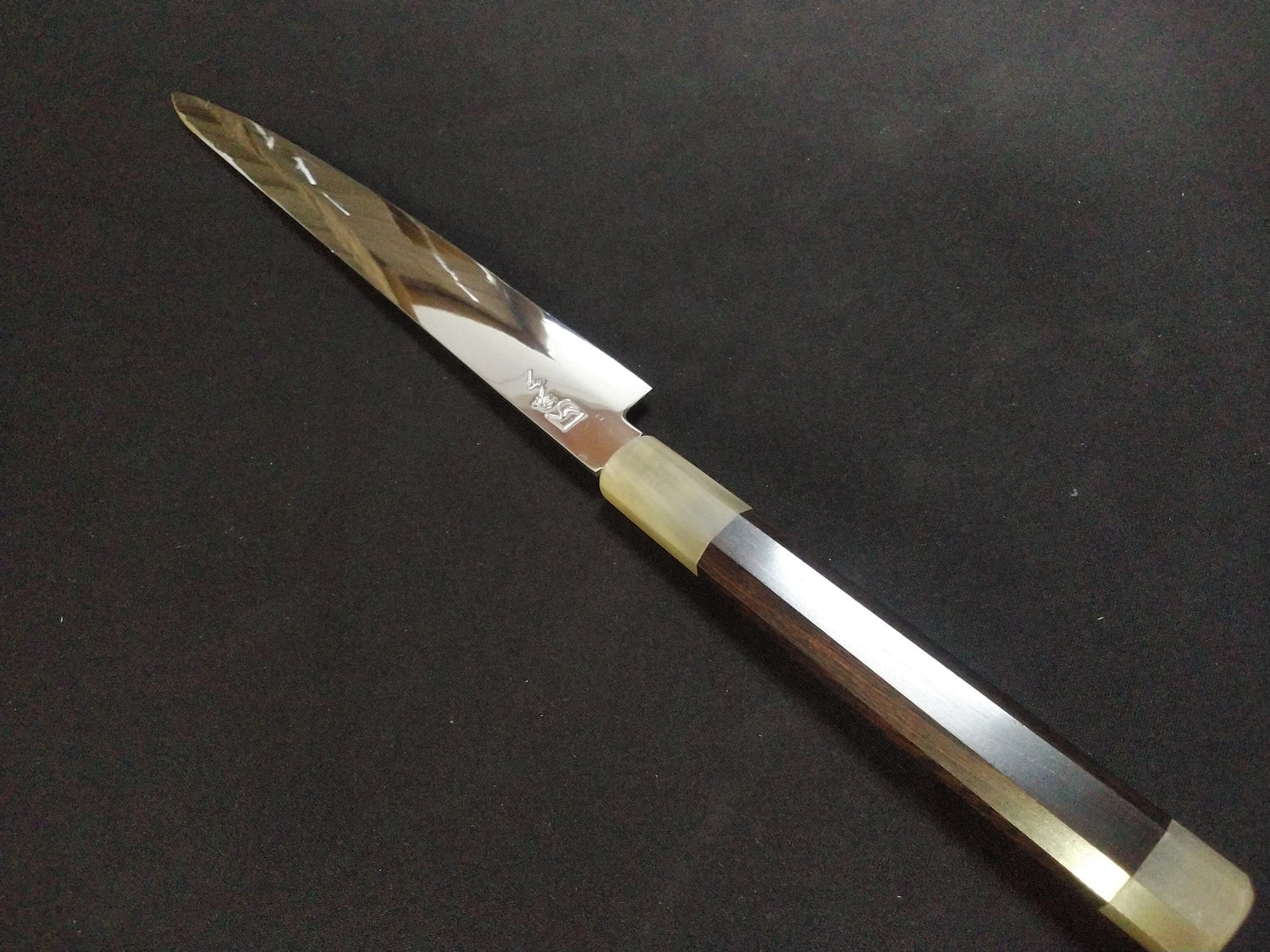
Japanese knife structure

The main difference between Western and Japanese knife is that Western knife is double-edged, while Japanese knife is based on single-edged blades. The reason why many Japanese knife has single-edged blades is because when the material is cut off, the tip of the blade cuts slightly to the left, which makes it easier for the cutter to separate from the material, allowing for a quick chopping motion. Since the cut can be made without destroying the structure of the material cross section, a beautiful cut surface can be obtained. Also, the single-edged blade has a thinner and sharper cutting edge compared to the double-edged blade.
<Honyaki, Awase>

- When looking at the materials used in kitchen knives, there are two types of knives: “Honyaki" or “All steel" knives, both of which are made from a single steel material in their construction. There is also “Awase" knives, which are made by combining two different materials such as steel and soft iron.
- Structure of Japanese Knife
Among Japanese knives such as Yanagi and Deba knives, the most widely used type of knife is a laminated kitchen knife.
The combined knives use hard steel for the blade, and soft iron for the other parts of the knife.
Compared to knives made of a single piece of steel, these knives are stronger, harder to break, and easier to sharpen than those made of a single piece of steel. It is also called "Kasumi" (haze sharpening) because the soft iron portion appears hazy. On the other hand, Japanese knives made from a single piece of steel are called “Honyaki”. Honyaki is a high-end product that takes a lot of time and effort to produce. It is hard and does not warp or distort even if used for a long time.

Honyaki
It is a forged knife. The knife has a junction in the middle of the spine and the blade (cutting edge). In the photo, if you say up and down, the upper part of the spine is made of base metal and the blade (cutting edge) is made of steel. The sharpness is sharp and it lasts three times longer than kasumi-awase (mist matching). Because the steel is very hard, sharpening takes time and is difficult. The price is about 3 to 5 times that of kasumi-awase (mist matching). It varies depending on the type (quality) of steel. It can be said that it is for professionals who cook.

Kasumi (Awase)
It is a forged knife. This is the most common type. The back is steel and the front is base metal, joined together front and back. For this reason, you can see a line on the blade (cutting edge) part. This line is the boundary between steel and base metal. The pattern of this line also changes depending on the forging method and the type of steel.
Kasumi Hari Awase
The back is steel and the front is base metal, joined together front and back, but in this case, they use steel material that is already made in two layers. Usually there is no edge in forged knives. Therefore, the sharpness is lower than Kasumi(Aawase). The feature is that the thickness is uniform and the line on the blade (cutting edge) part is straight. It is often used for yanagiba knives. The price is also a little cheaper. Of course, the sharpness and price vary greatly depending on the material.
Zenkou(All steel)
The thickness is uniform and there is no line on the blade (cutting edge) part. Although it is called all-steel, most of the steel used is cheap and the price is the cheapest. This also depends on the material.


Single-Edged or Double-Edged: Which to Choose?
When it comes to selecting Sakai Uchihamono, the choice between single-edged and double-edged blades is also crucial. Single-edged blades, which have a shape that is sharpened on only one side, like a Japanese sword, were developed in Sakai during the mid-Edo period and remain the mainstream design of Sakai Uchihamono today.
